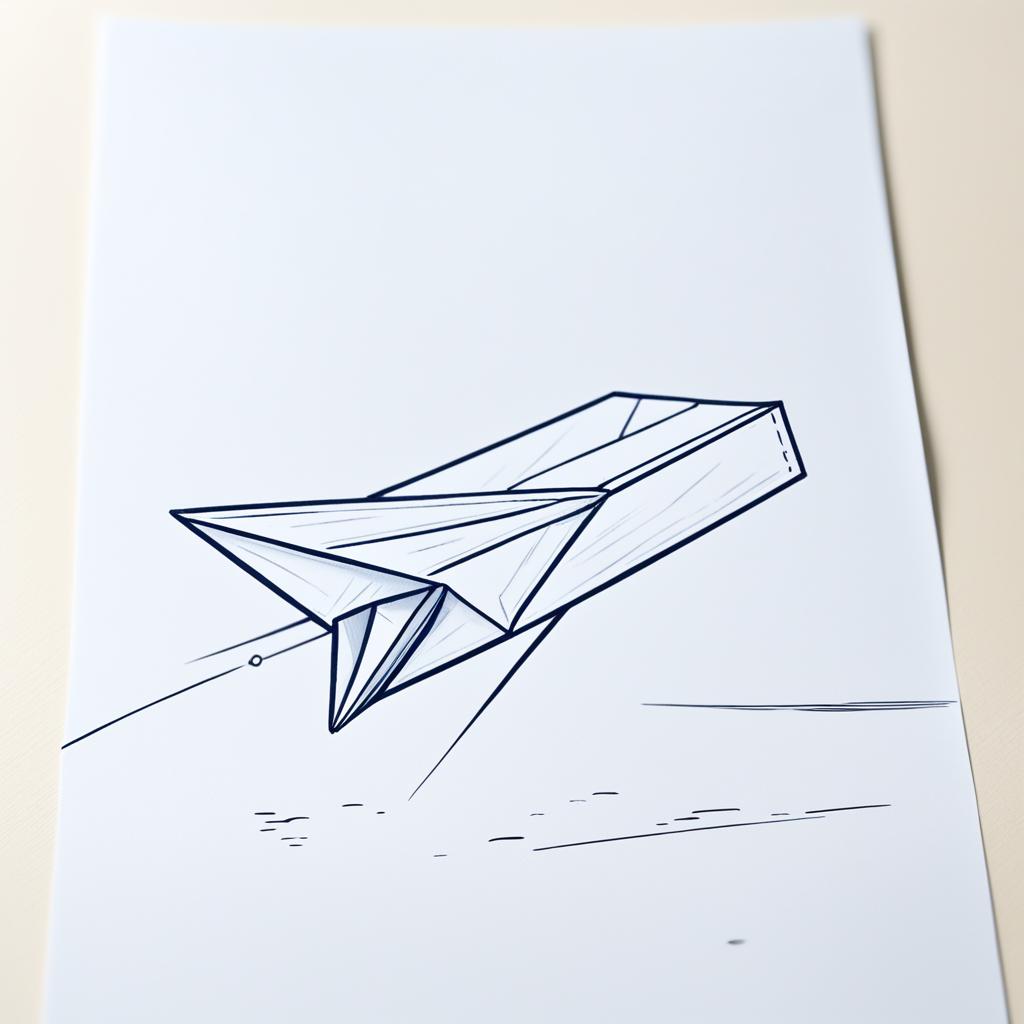Have you ever wondered how paper size can impact the flight distance of a paper airplane? It turns out that the size of the paper you use can make a significant difference in how far your paper airplane will travel. But why is this the case? And is there an optimal paper size for maximizing flight distance?
In this article, we will delve into the fascinating world of paper airplanes and explore how paper size influences their flight performance. We will uncover the key factors that come into play, including aspect ratio, resizing techniques, wing size, and more. By the end, you’ll have a deeper understanding of the relationship between paper size and flight distance, and you may even discover some surprising secrets to building the ultimate paper airplane.
So, if you’re ready to soar into the world of paper airplanes and uncover the secrets behind their flight performance, let’s dive in!
Resizing Paper for Different Paper Airplane Sizes

To create different sizes of paper for paper airplanes, you need to resize regular paper to the desired dimensions. Here’s how you can resize A4 and Letter Paper:
Resizing A4 Paper
A4 paper, which is commonly available, can be easily resized by cutting it in half to create A5 paper. This process can be repeated to create even smaller sizes such as A6.
| Original Paper Size | Resized Paper Size |
|---|---|
| A4 (8.27 x 11.69 inches) | A5 (5.83 x 8.27 inches) |
| A5 (5.83 x 8.27 inches) | A6 (4.13 x 5.83 inches) |
Resizing Letter Paper
Letter Paper requires more calculations and measurements to achieve the desired dimensions. It is important to accurately measure the dimensions to ensure the aspect ratio remains the same.
Templates and guides are available to assist with the resizing process. These resources can provide precise measurements and folding instructions for various paper airplane sizes.
Remember to maintain the aspect ratio when resizing the paper to ensure consistent flight performance.
Conducting Experiments to Determine Flight Distance

To understand how paper size impacts the flight distance of a paper airplane, you can conduct experiments that provide valuable insights. One effective experiment involves creating paper airplanes of different sizes while maintaining the same design and folding technique. By throwing these airplanes and measuring the distances they travel, you can analyze the correlation between paper size and flight performance.
To ensure accurate results, consistency is key. It’s important to use the same person to throw the airplanes, choose a consistent spot for launching, maintain the same throwing direction and angle, and apply a uniform force. By conducting multiple throws for each paper size, you obtain a range of distances, enabling more precise observations.
Once you’ve gathered the data from your experiments, you can analyze it by plotting it on a graph. This visual representation allows you to identify trends or patterns that may exist between paper size and flight distance. Consider using a line graph with paper size on the x-axis and flight distance on the y-axis.
To further enhance your understanding of the factors impacting flight distance, you can expand your experiments to explore aspects such as the weight and balance of the paper airplanes. By adjusting these variables while keeping the paper size consistent, you gain valuable insights into their influence on flight performance. This comprehensive approach enables a more holistic assessment of the factors contributing to the flight distance of paper airplanes.
Continue reading to explore how wing size plays a crucial role in paper airplane flight or jump to the conclusions for a concise summary of key findings.
The Impact of Wing Size on Paper Airplane Flight

When it comes to paper airplane flight, the size of the wings plays a crucial role. The wing size directly affects the lift generated by the airplane, which determines how long it can stay in the air.
A larger wing size generally provides more lift, allowing the paper airplane to stay airborne for a longer duration. The increased lift is a result of the larger surface area of the wings, which creates more favorable air pressure conditions. As a result, the airplane can glide smoothly through the air, maximizing its flight distance.
However, it’s important to strike a balance when it comes to wing size. While a larger wingspan can enhance lift, there is a point where the size becomes counterproductive. If the wingspan gets too large, it can lead to increased weight and drag, which hampers the airplane’s flight performance.
Experimentation with different wing sizes is crucial for finding the optimal balance between lift and weight. By testing paper airplanes with varying wing sizes, you can observe how the flight distance is affected. Start with smaller wing sizes and gradually increase them to evaluate the changes in flight performance.
Pro Tip: Finding the Ideal Wingspan
If you’re looking to maximize the flight distance of your paper airplane, consider testing different wing sizes and recording the results. Keep track of the wing sizes, flight distances, and any noticeable patterns or trends. This data will help you identify the ideal wingspan that offers the perfect balance between lift and weight.
Remember, the optimal wing size may vary depending on the design and folding technique of the paper airplane. Therefore, it’s essential to experiment and explore different wing sizes to find what works best for your specific design.
Analyzing Results and Drawing Conclusions
After conducting experiments and collecting data on the flight distances of paper airplanes with different sizes, you can now analyze the results and draw conclusions. One effective way to analyze the data is by plotting it on a graph to identify any patterns or trends. By visually representing the data, it becomes easier to identify the relationships between paper size and flight distance.
Upon analyzing the data, an interesting observation emerges. It was found that the smallest and largest paper airplanes did not perform as well in terms of flight distance. Instead, there seemed to be a sweet spot around the middle, where a paper airplane size of approximately 6.6 x 8.5 inches outperformed others. This suggests that regular printer paper may not provide the optimal size for maximizing flight distance.
However, it is important to consider other factors that may influence flight performance. Variables such as wind conditions, angle of throw, and the power exerted during the throw can also impact the results. These elements should be taken into account when drawing conclusions about how paper size affects the flight distance of paper airplanes.


